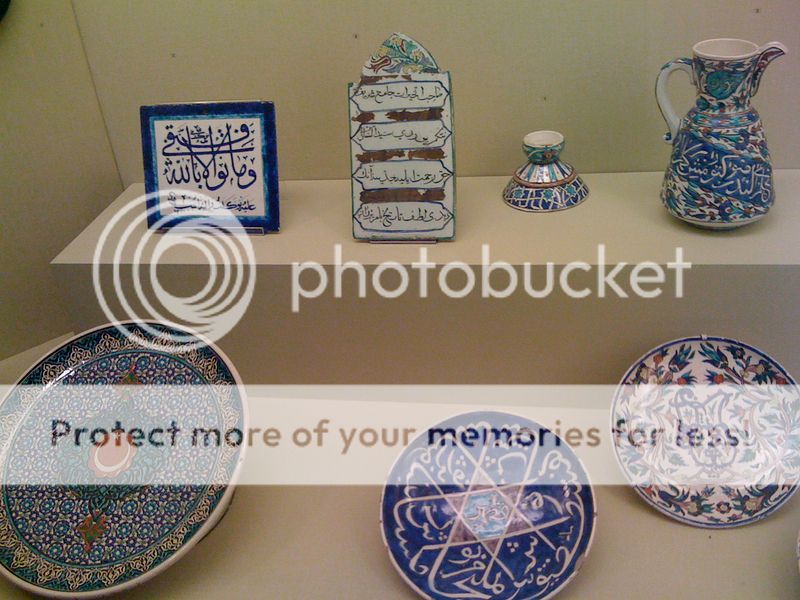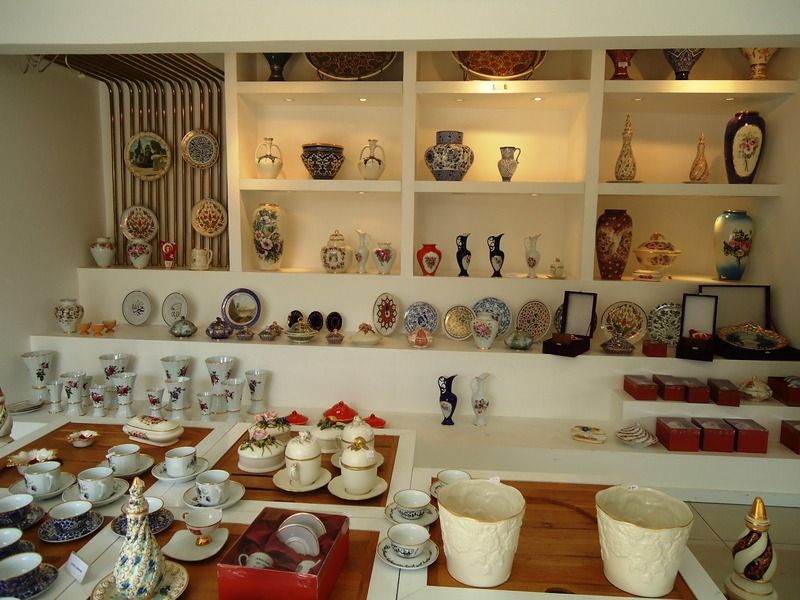GPS : 41°01'54.4"N 28°58'30.1"E / 41.031788, 28.975019

PHOTOGRAPHS ALBUM
Visiting Hours : Tuesday to Saturday 10:00 - 19:00 / Sunday 12:00 - 18:00. The museum is closed on Monday.
A CULTURAL ENDEAVOR OF THE SUNA AND INAN KIRAÇ FOUNDATION
The Pera Museum, which opened its doors in early June 2005, is the first step of a comprehensive cultural endeavor that the Suna and İnan Kıraç Foundation has launched at this distinguished venue in the city for the purpose of providing cultural service on a variety of levels.
An historical structure which was originally constructed in 1893 by the architect Achille Manoussos in Tepebaşı (İstanbul's most prestigious district in those days) and which was, until rather recently, known as the Bristol Hotel, was completely renovated to serve as a museum and cultural center for the project. Transformed into a fully-equipped modern museum, this venerable building is now serving the people of İstanbul once again.
The first and second floors of the Pera Museum house three permanent collections belonging to the Suna and İnan Kıraç Foundation, with the Sevgi and Erdoğan Gönül Gallery on the second floor. The third, fourth, and fifth floors are devoted to multipurpose exhibition spaces. There is an auditorium and lobby in the basement and on the ground floor are the reception desk and Perakende - Artshop and a cafe.
A large part of the first of the two museum floors above the ground floor displays choice examples from the foundation's collection of Anatolian Weights and Measures for the benefit of those who are in love with history and archaeology. Made from many different materials using many different techniques, these objects show the development of the devices used to weigh and measure in Anatolia since the earliest times.
The Suna and İnan Kıraç Foundation's collection of Orientalist art consists of more than three hundred paintings. This rich collection brings together important works by European artists inspired by the Ottoman world from the 17th century to the early 19th.
This collection, which presents a vast visual panorama of the last two centuries of the Ottoman Empire, includes works by Osman Hamdi, regarded by art historians as the genre's only "native Orientalist" and of course his most famous painting The Tortoise Trainer. Many paintings from the private collections of the late Sevgi and Erdoğan Gönül have also entered the foundation's permanent collection. It is planned to exhibit the collection in the Sevgi and Erdoğan Gönül Gallery dedicated to their name in a series of long-term thematic exhibitions.
The first of these, which opened in early June 2005, is called "Portraits from the Empire" and consists of portraits of sultans, princes, and other members of the Ottoman imperial family as well as of foreign ambassadors together with other "portraits" in the general sense, showing people from many different periods and walks of life.
In addition to its function as a private museum in which to display the collection of the family, the Pera Museum is also intended to provide the people of İstanbul with a broad range of cultural services as a modern cultural center located in a vibrant part of the city and equipped with multipurpose exhibition spaces, an auditorium and lobby, and activity spaces for visitors.
KÜTAHYA TILES AND CERAMICS
A large part of the first of the two museum floors above the ground floor in another wing is the foundation's collection of Kütahya Tiles and Ceramics, whose strikingly beautiful pieces seek to shed new light on an area of creativity in our cultural history that is not very well known.
The Collection
The beginnings of the Suna and İnan Kıraç Foundation's Kütahya Tiles and Ceramics Collection date back to the 1980s, and over the years it has grown to become one of the most outstanding collections of its kind. Today the collection consists of over 800 remarkable pieces representing various periods, especially the 18th - 20th centuries. The limited number of pieces on display have been chosen to give a general idea of the collection and the craftsmanship of Kütahya ceramics.
After İznik, Kütahya was Ottoman Turkey's most important centre of ceramic production. Thanks to abundant deposits of clay in the area, ceramics were made here in large quantities in Phrygian, Hellenistic, Roman and Byzantine times, and the traditional techniques of this art have survived to the present day. Although little research into ceramics produced in Kütahya during the early Ottoman and pre-Ottoman Turkish periods has as yet been carried out, recent finds and publications suggest that the industry essentially parallelled that of İznik.
The earliest known Kütahya ceramics are monochrome glazed bricks decorating the minaret balcony of Kurşunlu Mosque dated 1377, and tiles on the cenotaph and floor of the Tomb of Yakup II of the Germiyanoğlu principality dated 1428 and located in the imaret founded by the same ruler. Kütahya ceramics continued to be manufactured over the next centuries, the finest quality examples dating from the 17th and 18th centuries.
A decline in quality is observable from the second half of the 18th century, but there was a revival in the late 19th century, and with state support during the second quarter of the 20th century, this traditional ware has survived to the present day.
Kütahya ceramics stand somewhere between İznik ceramics, which primarily represented Court Art, and Çanakkale ceramics, which are usually regarded as 'Folk Art. The potters of Kütahya produced a wide range of tiles for architectural decoration and household pottery that was sold widely throughout the country. In terms of both the volume and continuity of production, Kütahya ceramics are a very significant area of Ottoman craftsmanship.
Forms and Motifs
Stylised floral motifs, religious motifs and human and animal figures decorate most of the 18th century tiles and ceramics in the Suna and İnan Kıraç Foundation's Kütahya Tiles and Ceramics Collection. The pieces dating from this period have a white or cream coloured paste, white slip and transparent glaze. The motifs are painted underglaze in green, turquoise, yellow, cobalt blue and, from the mid-18th century onwards, manganese purple, the motifs being outlined in black.
A second group of Kütahya ware consisting of dishes, lemon squeezer, bowls, bottles, plates and cups dating from the 18th century are decorated with stylised flowers, leaves and curling tendrils in cobalt blue, with the occasional addition of yellow, green or turquoise. Ewers and jugs of various shapes and sizes are decorated with cypress tree motifs in relief, circular crosshatched medallions and floral scrolls worked in free brushstrokes.
One of the foremost characteristics of the Ottoman Empire was the tolerant attitude and absence of discrimination on grounds of religion, race or culture. Consequently Muslim and Christian potters work together in Kütahya producing objects designed to meet the needs of both communities. Striking examples in this exhibition are pottery and tiles with motifs relating to the Christian liturgy.
Kütahya's contribution to architectural decoration over the centuries is illustrated by tiles dating from various periods in the last section of the exhibition, showing how Kütahya pottery set its mark to Ottoman society at every level, from coffee cups to monumental building decoration.
LOCATION SATELLITE MAP
WEB SITE : Pera Museum
MORE INFO & CONTACT
E-Mail : info@peramuzesi.org.tr
Phone : +90 212 334 9900
Fax : +90 212 245 9512
These scripts and photographs are registered under © Copyright 2017, respected writers and photographers from the internet. All Rights Reserved.
